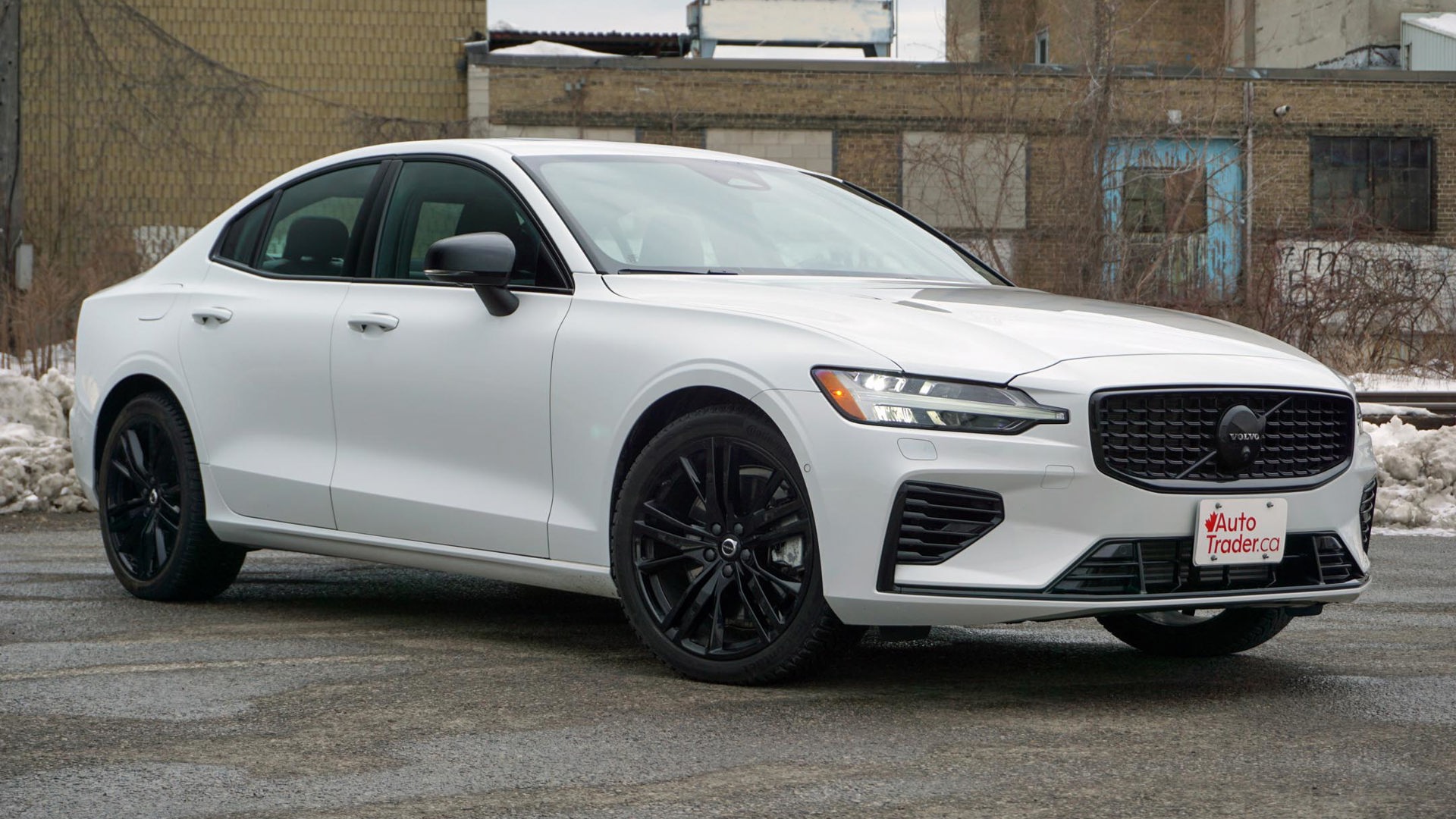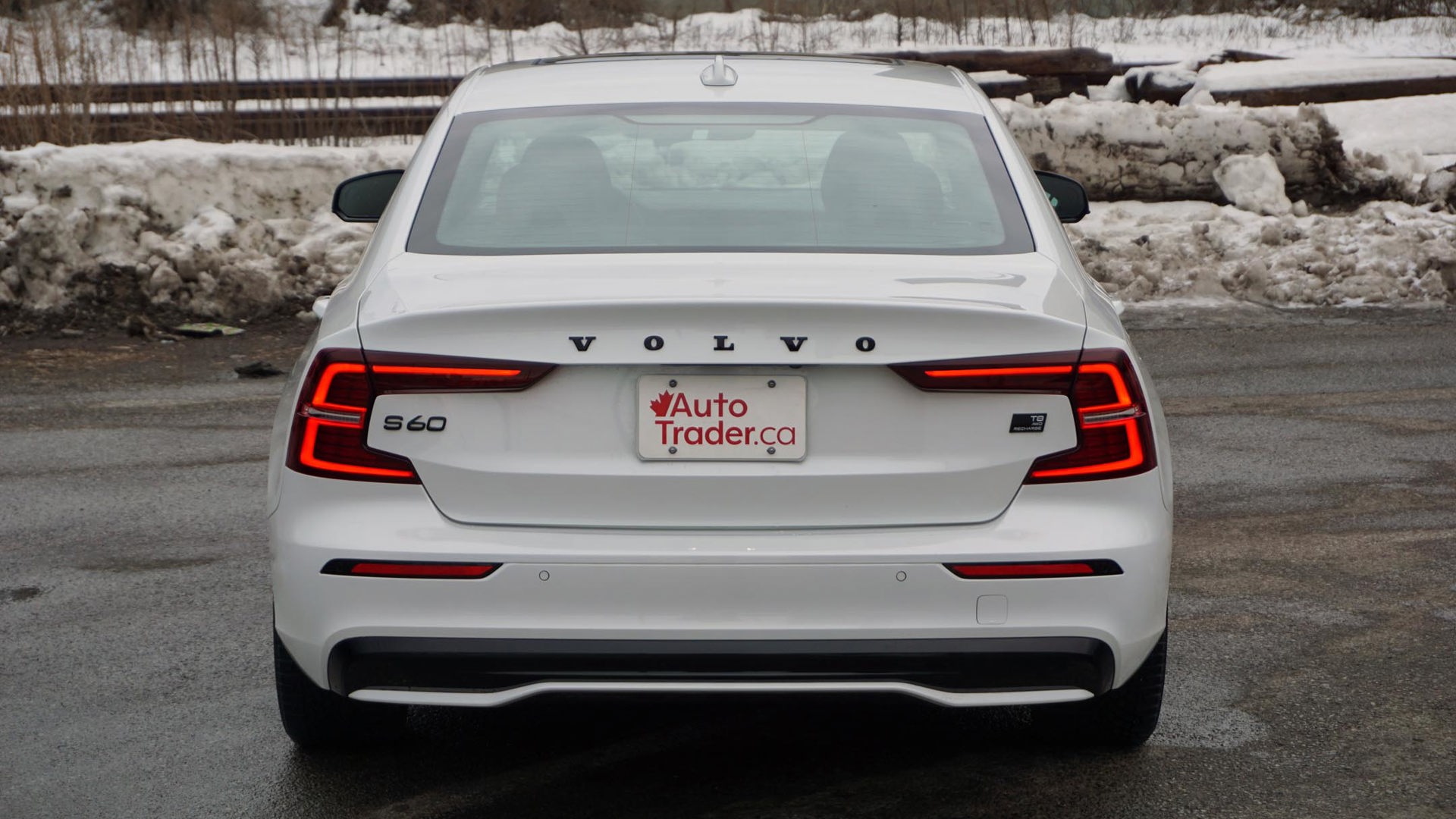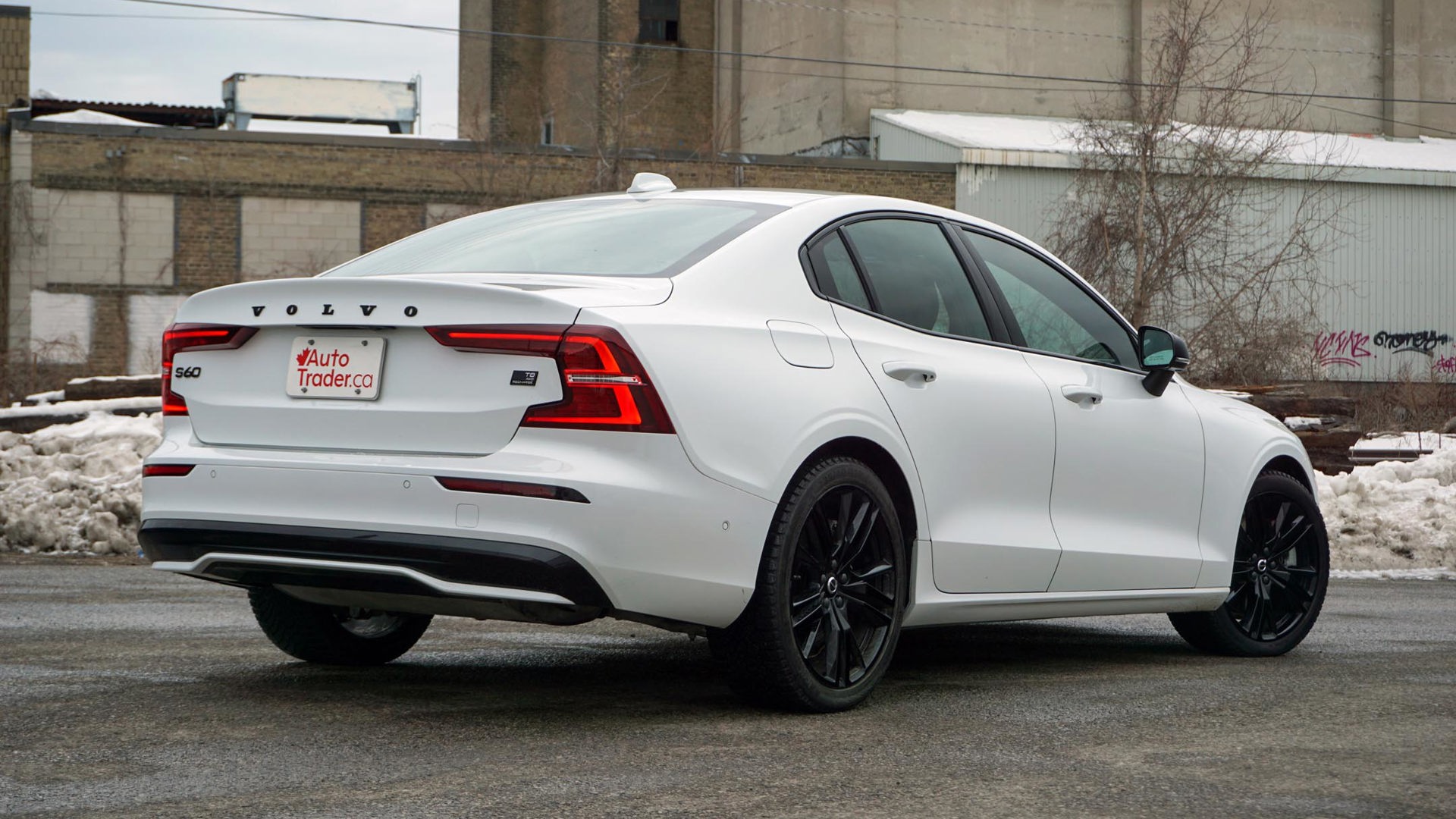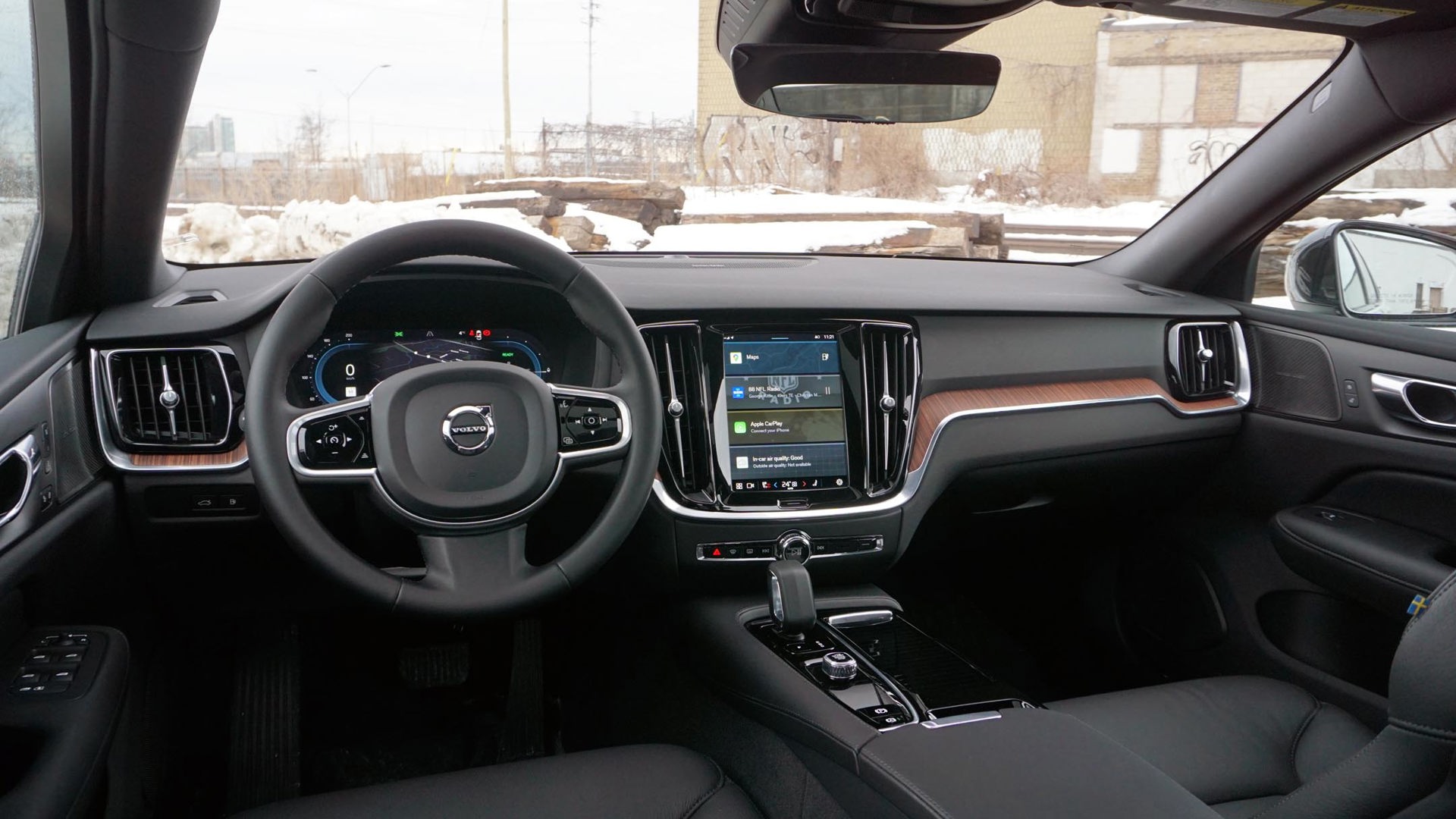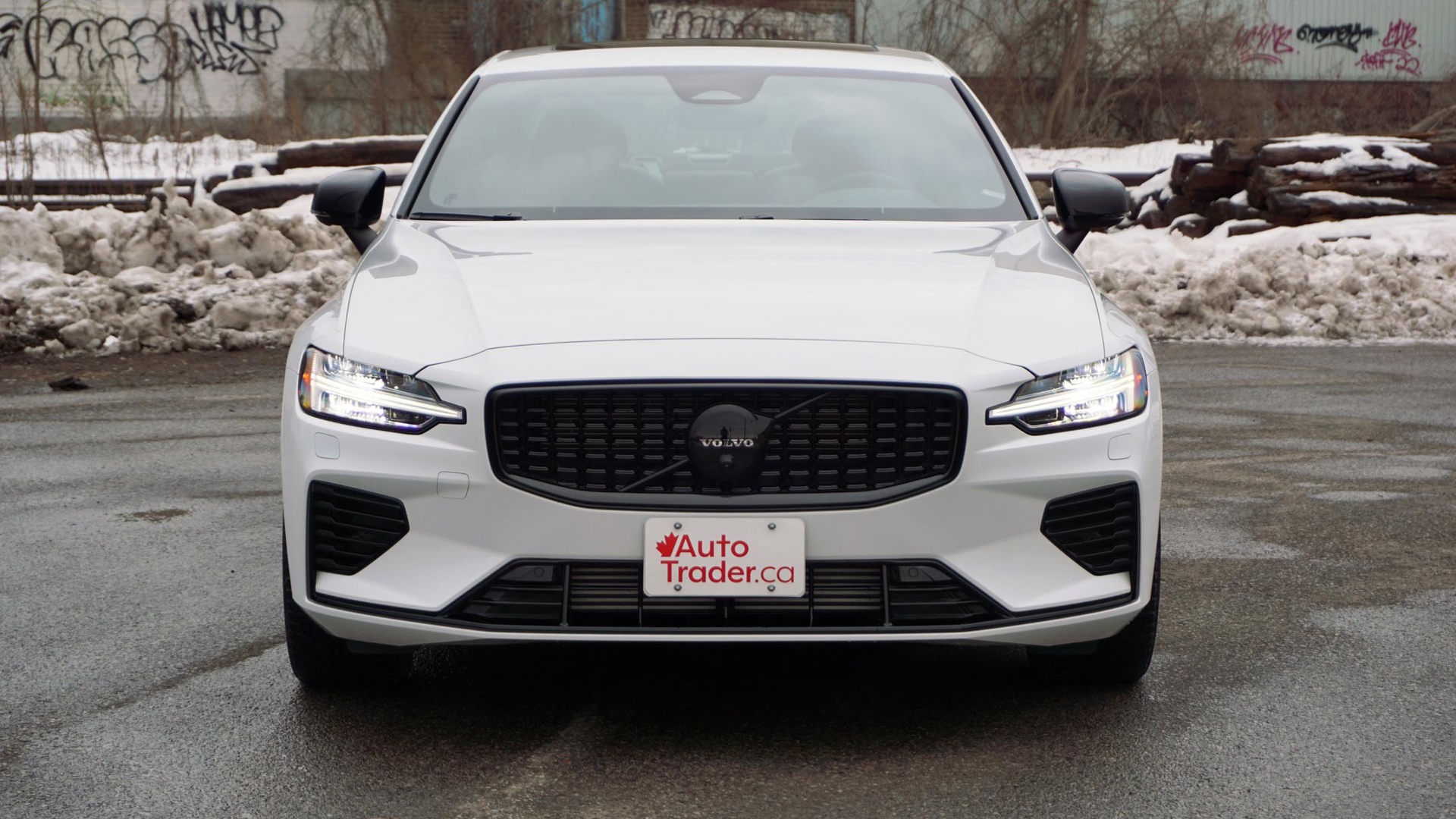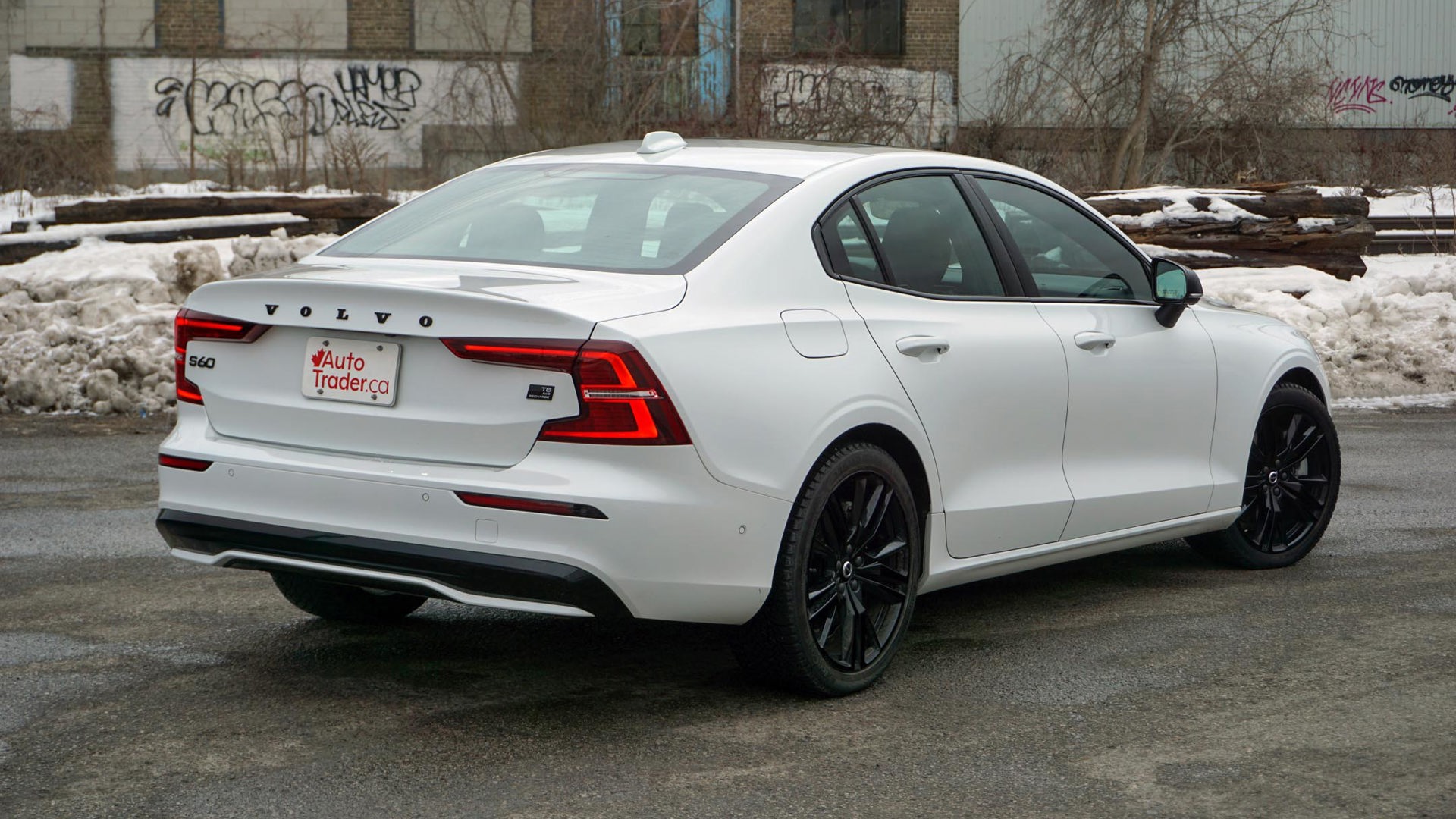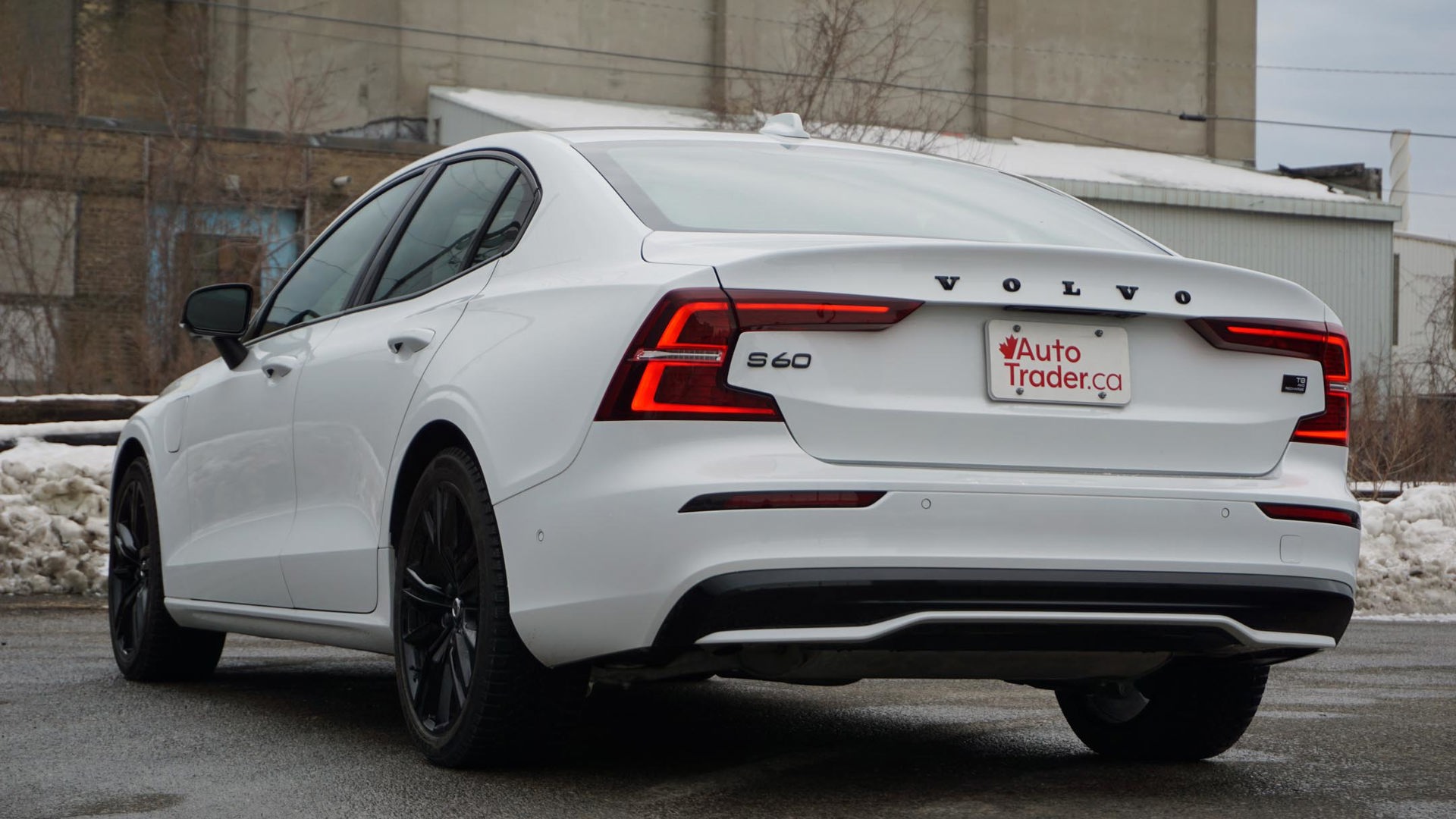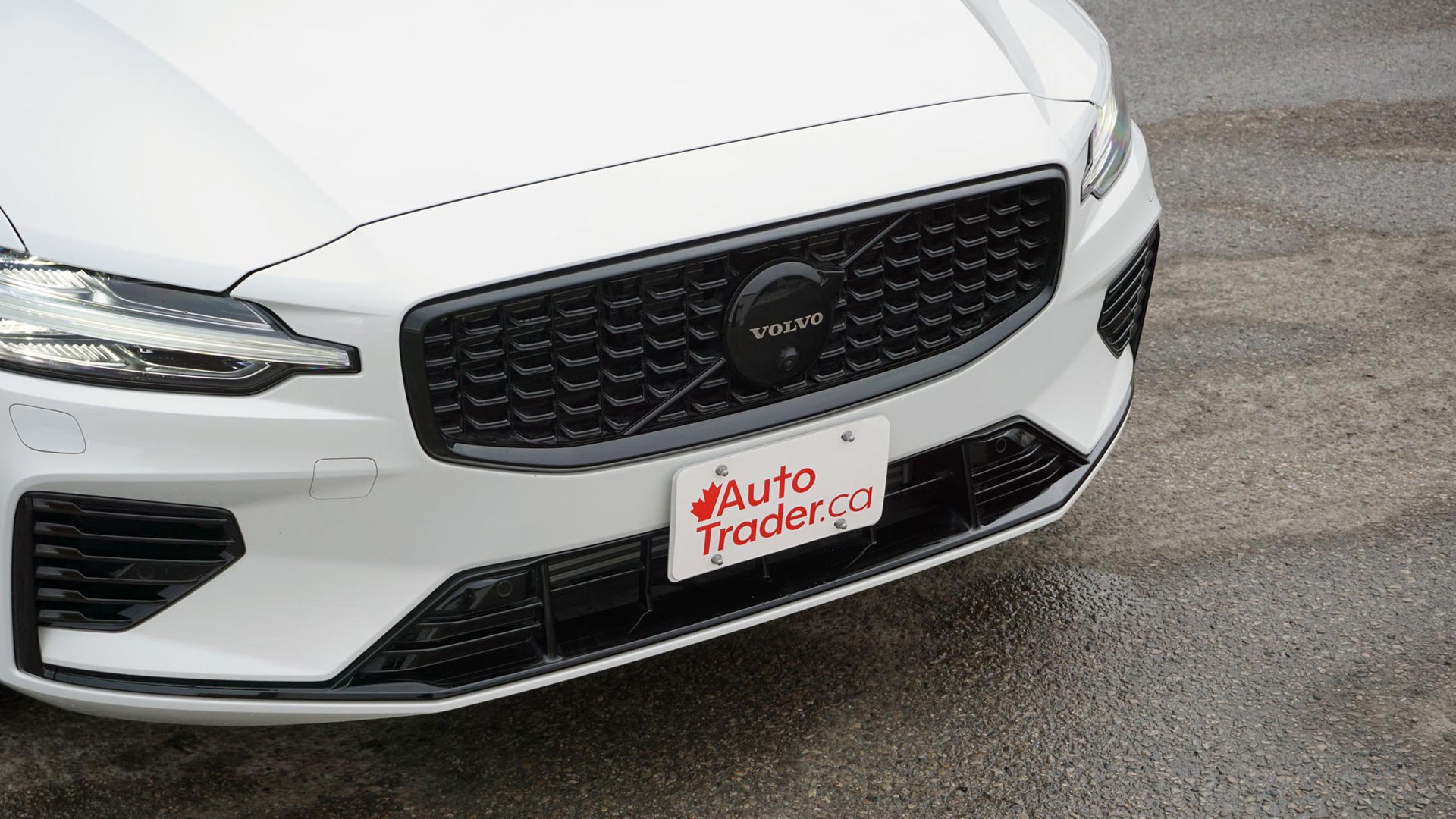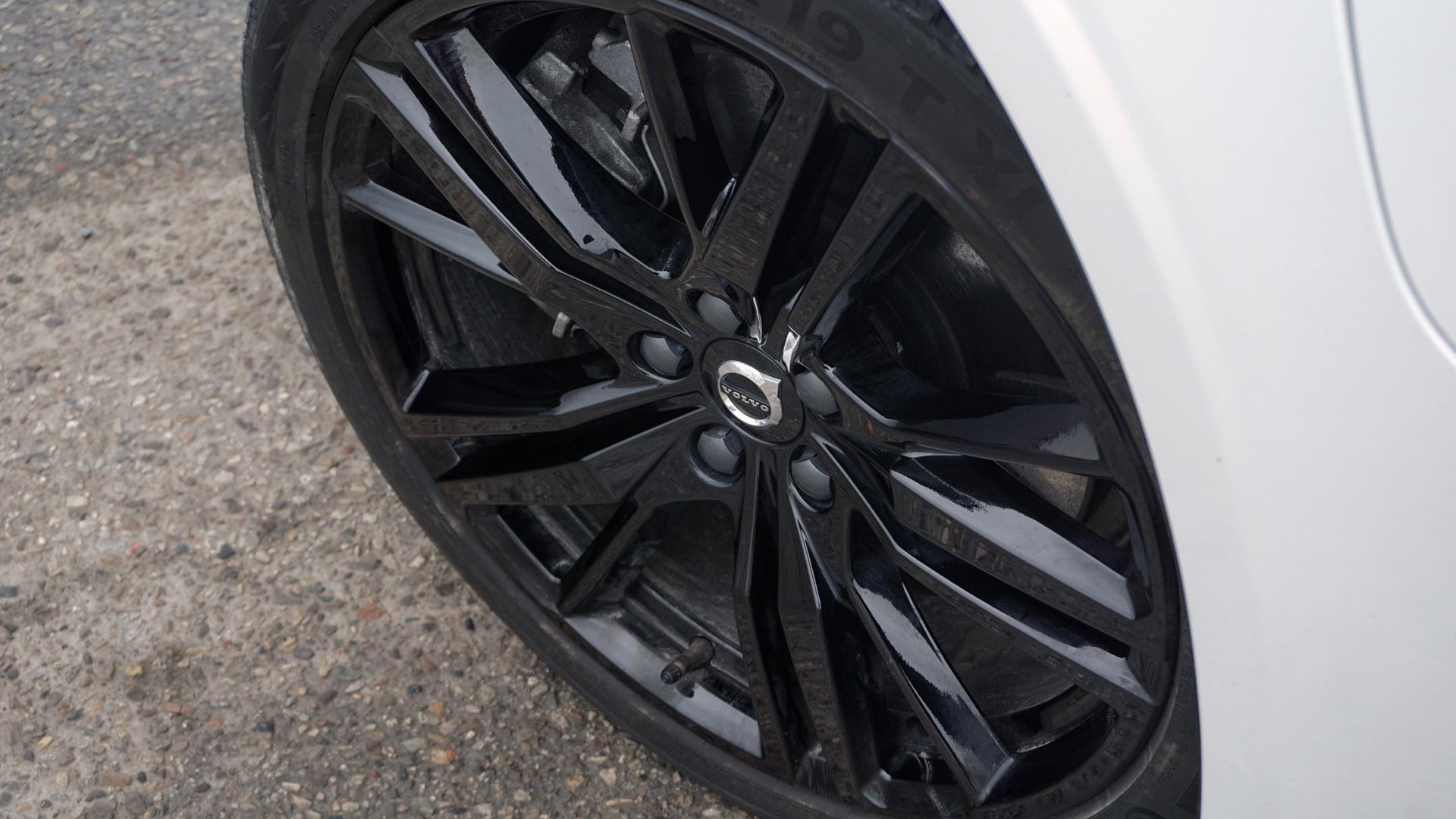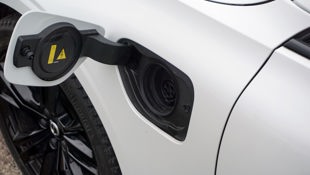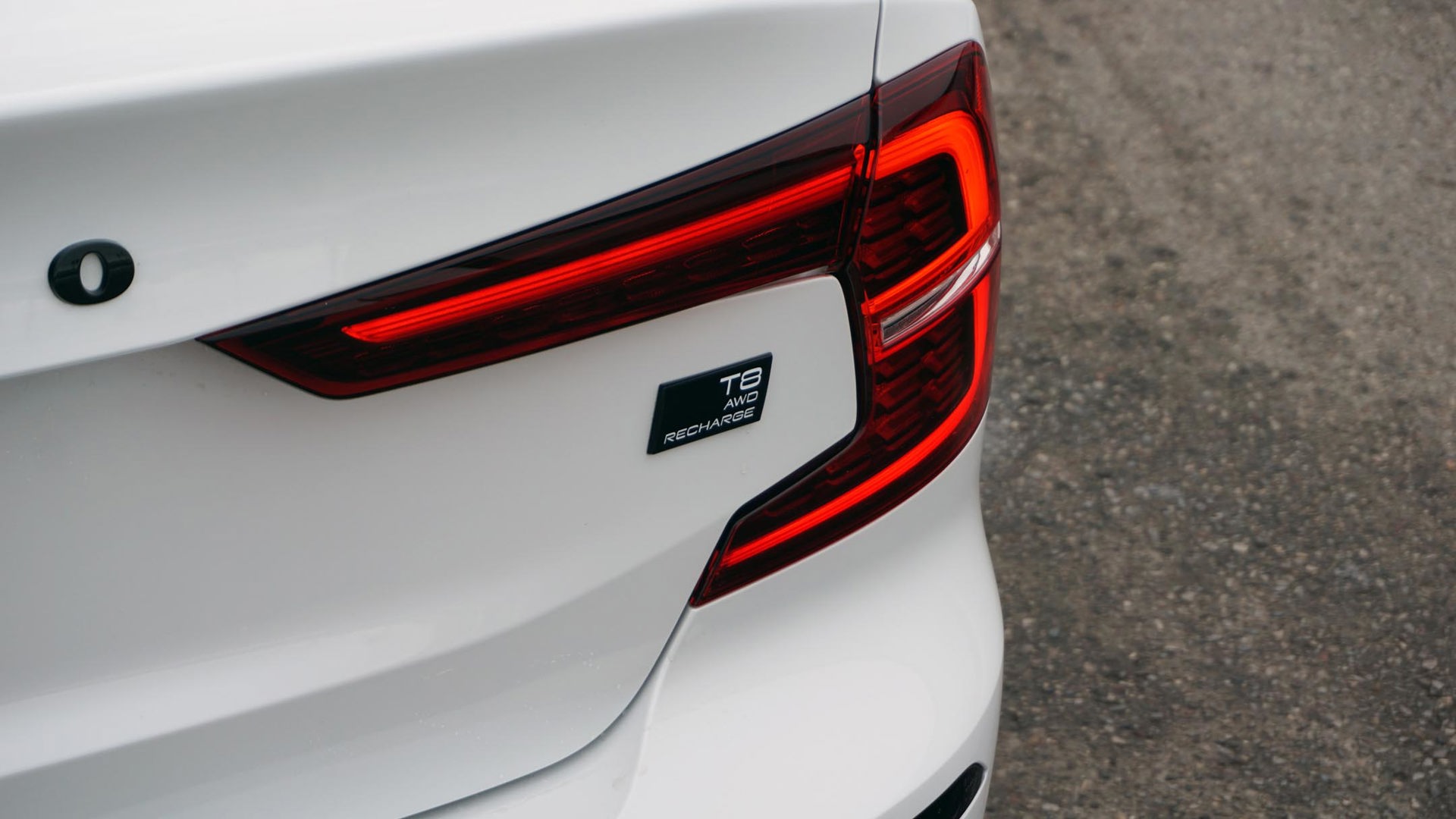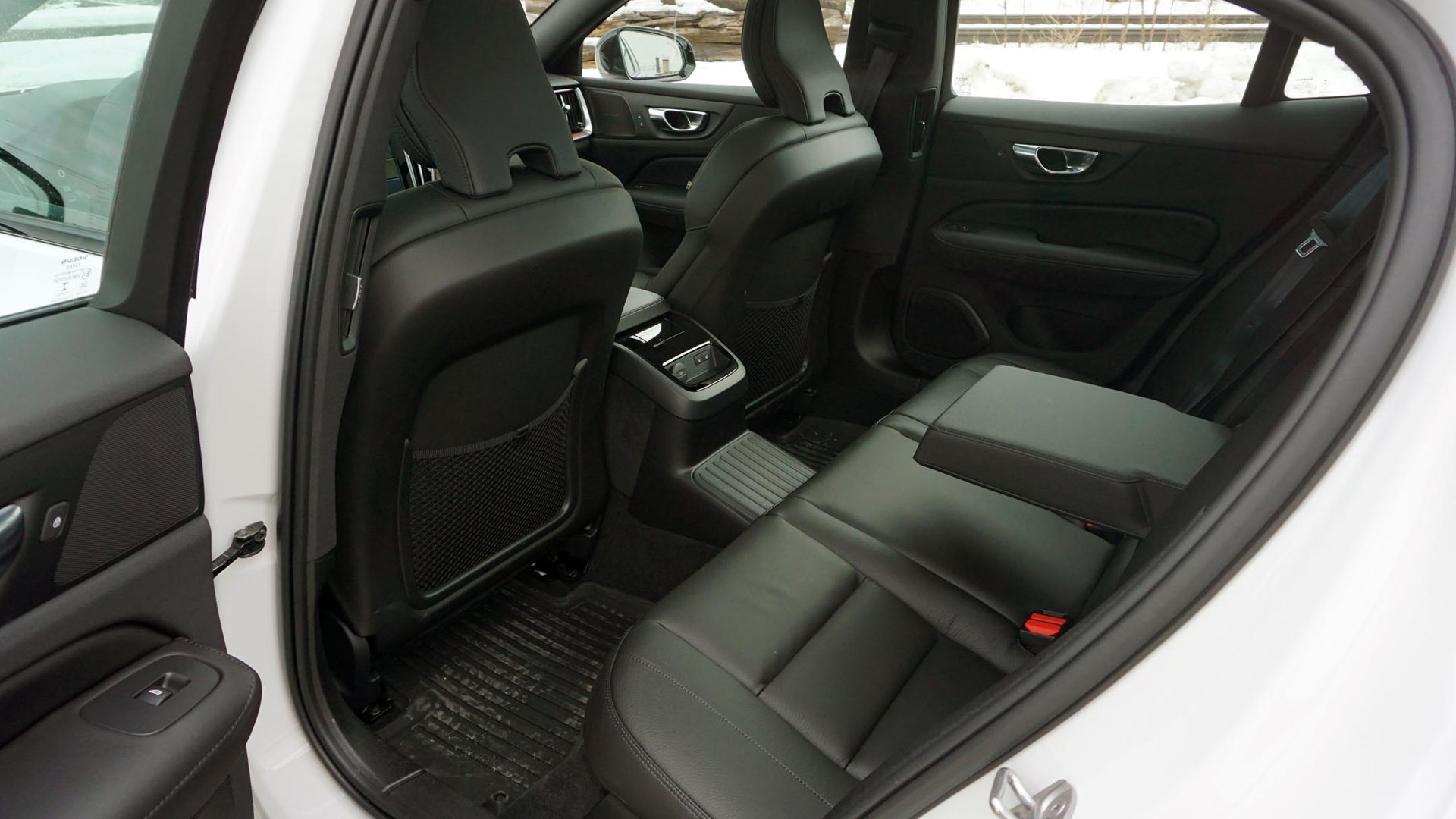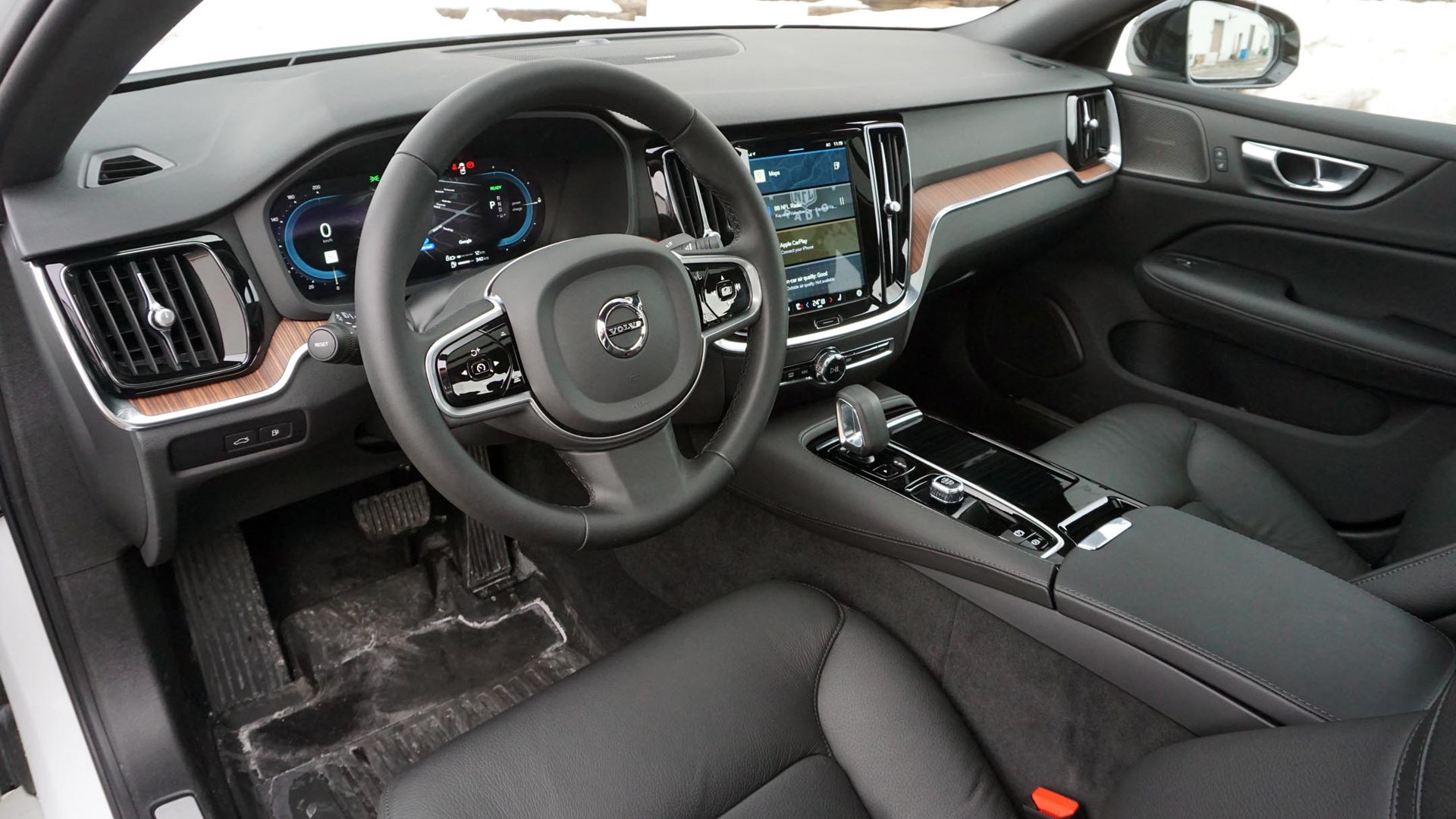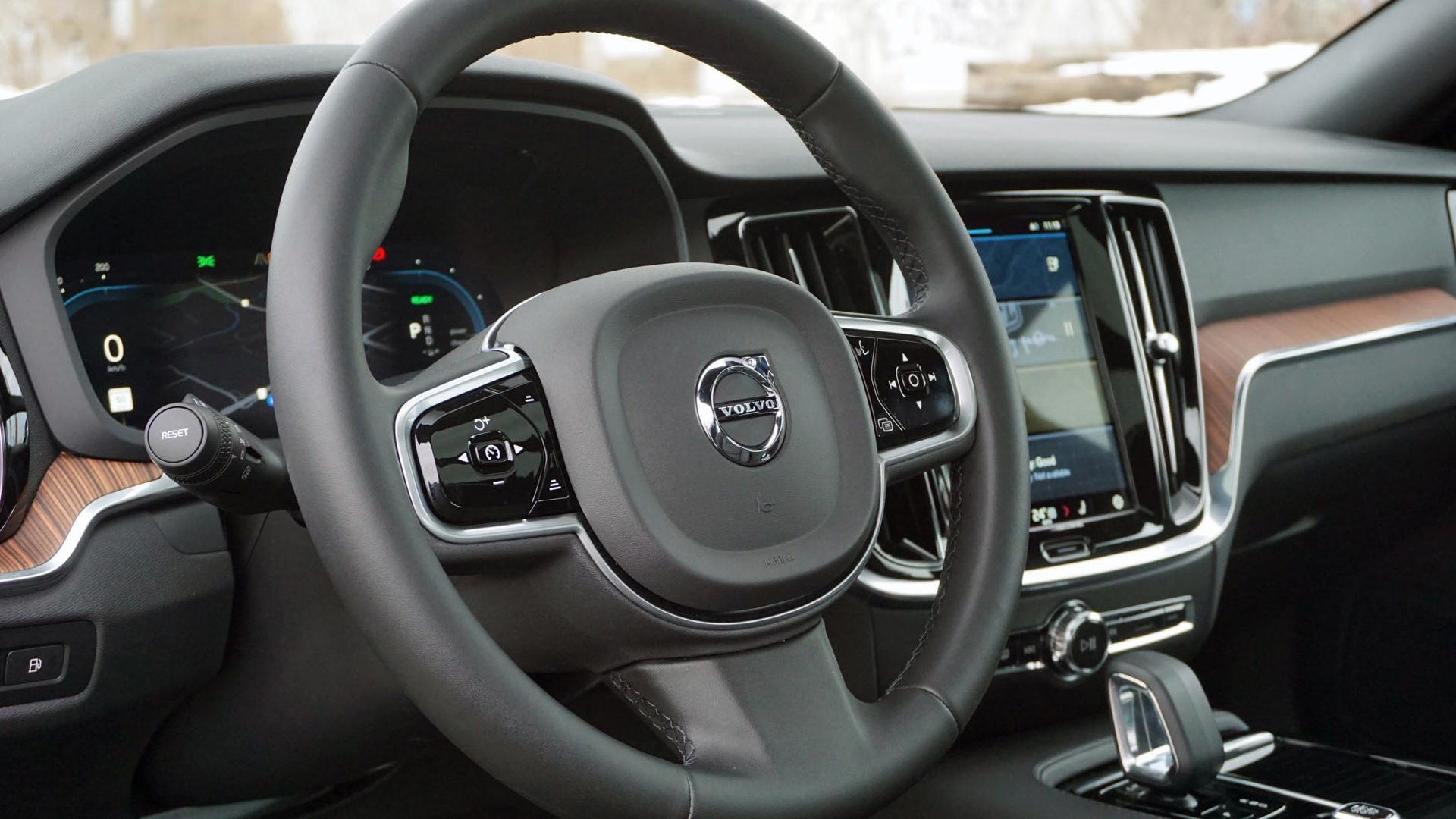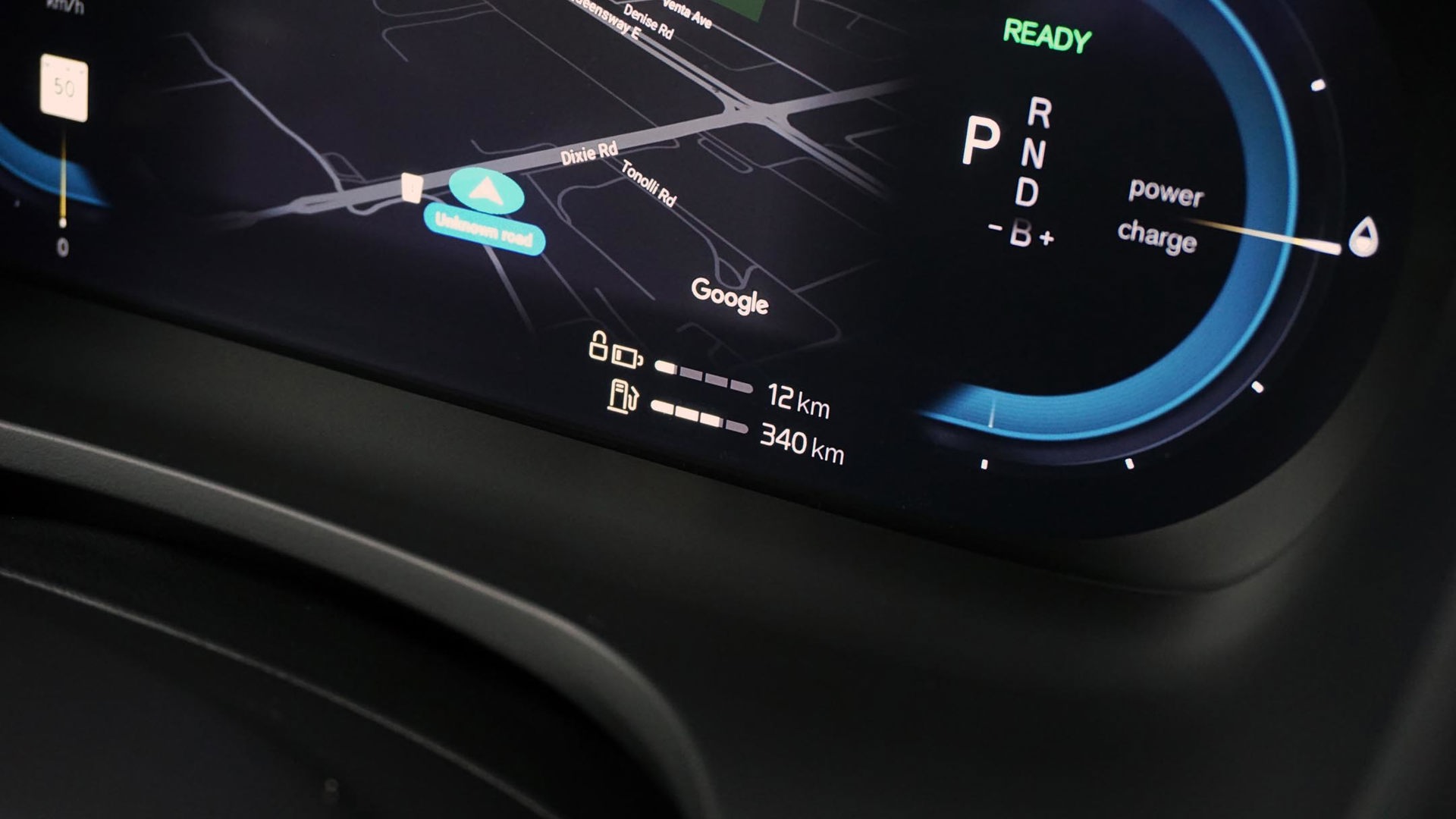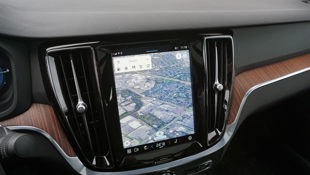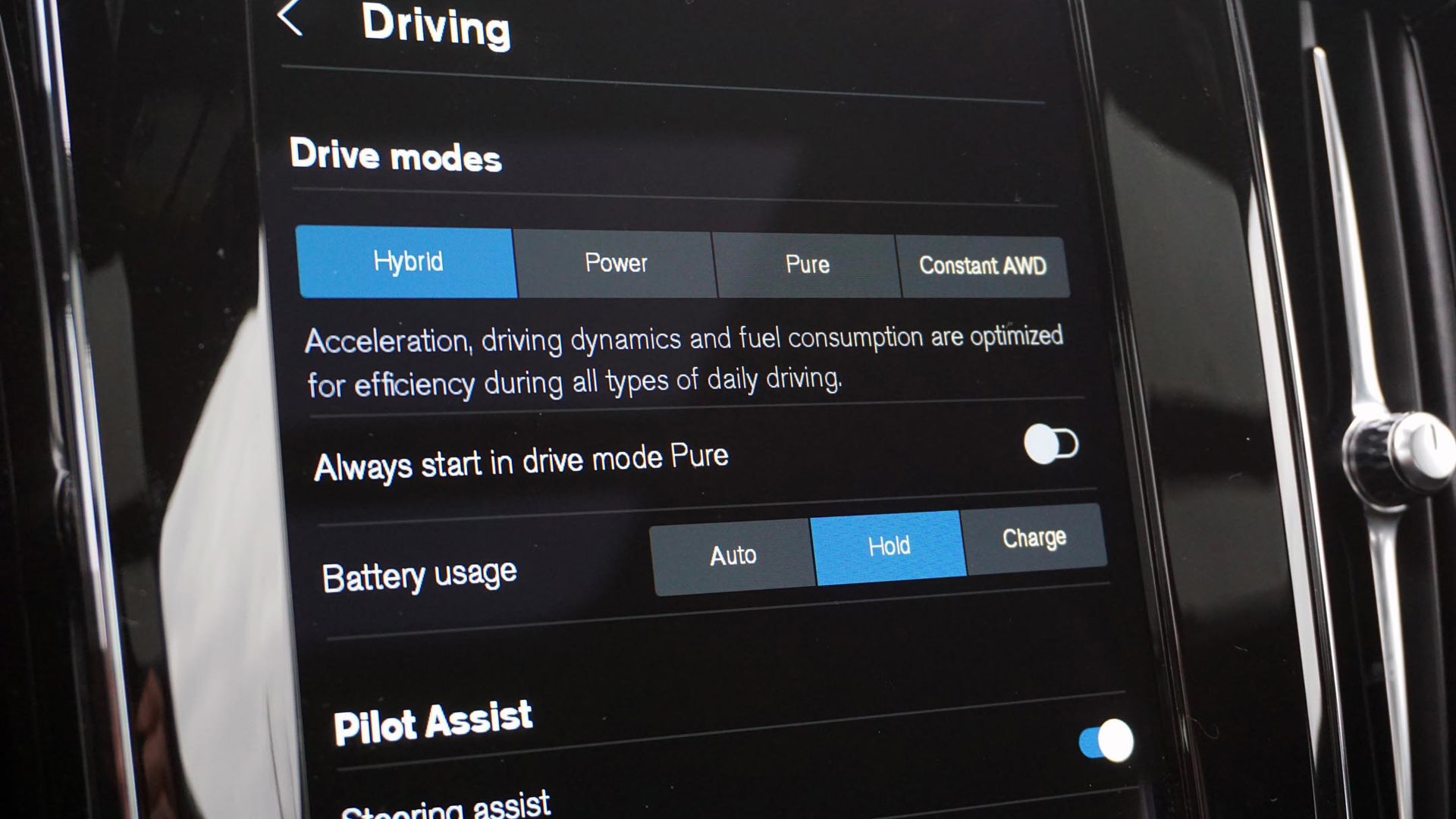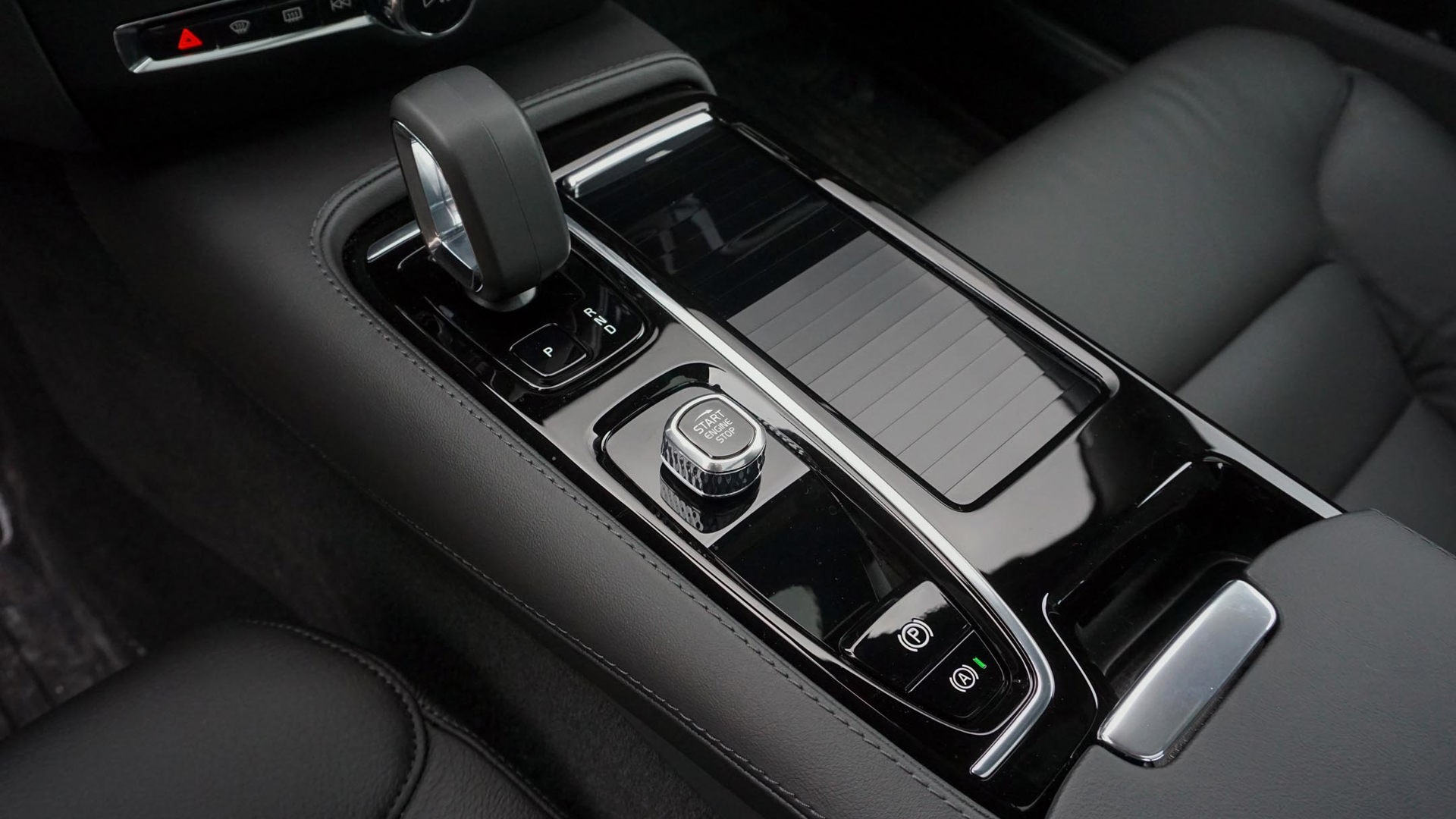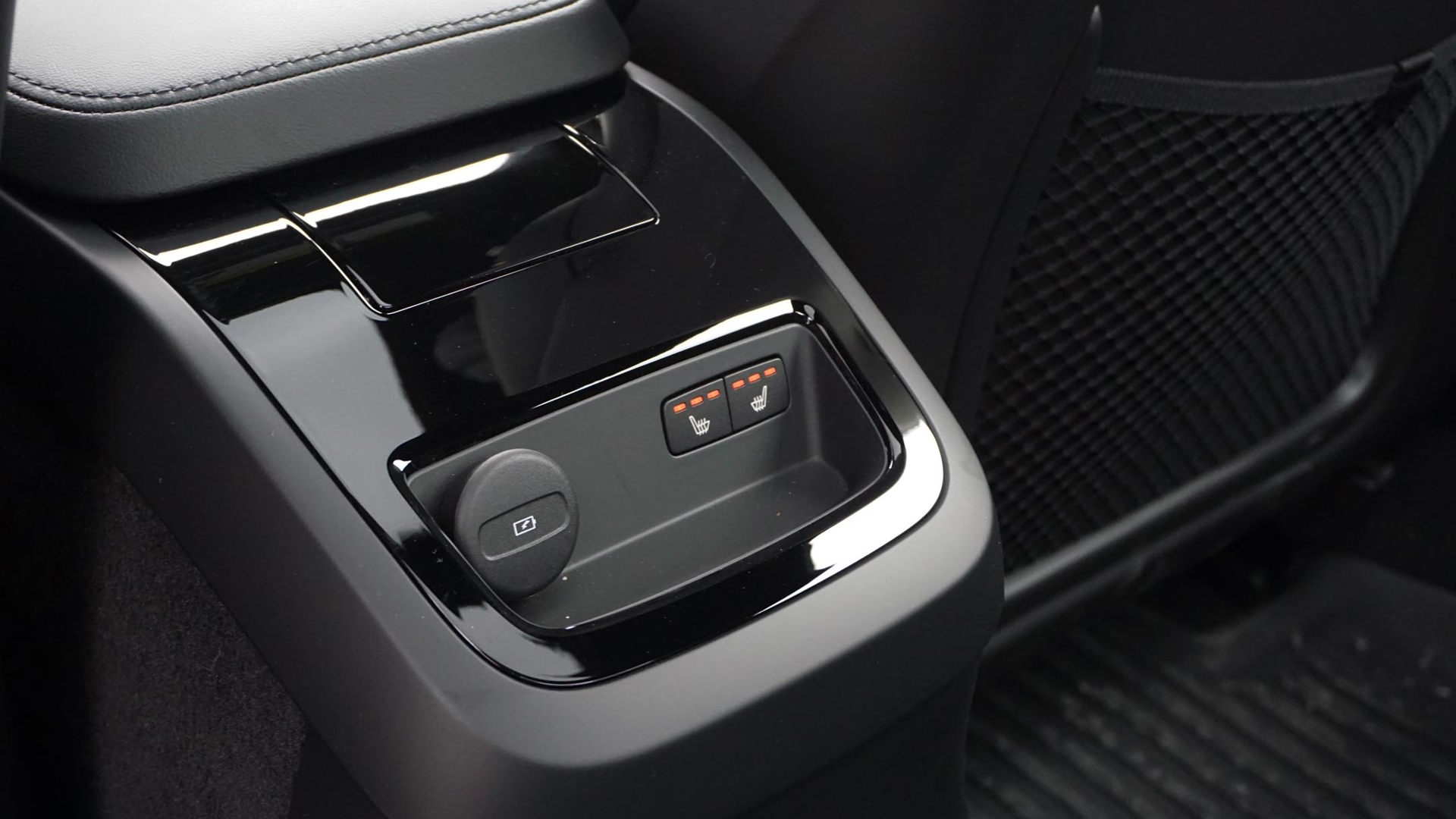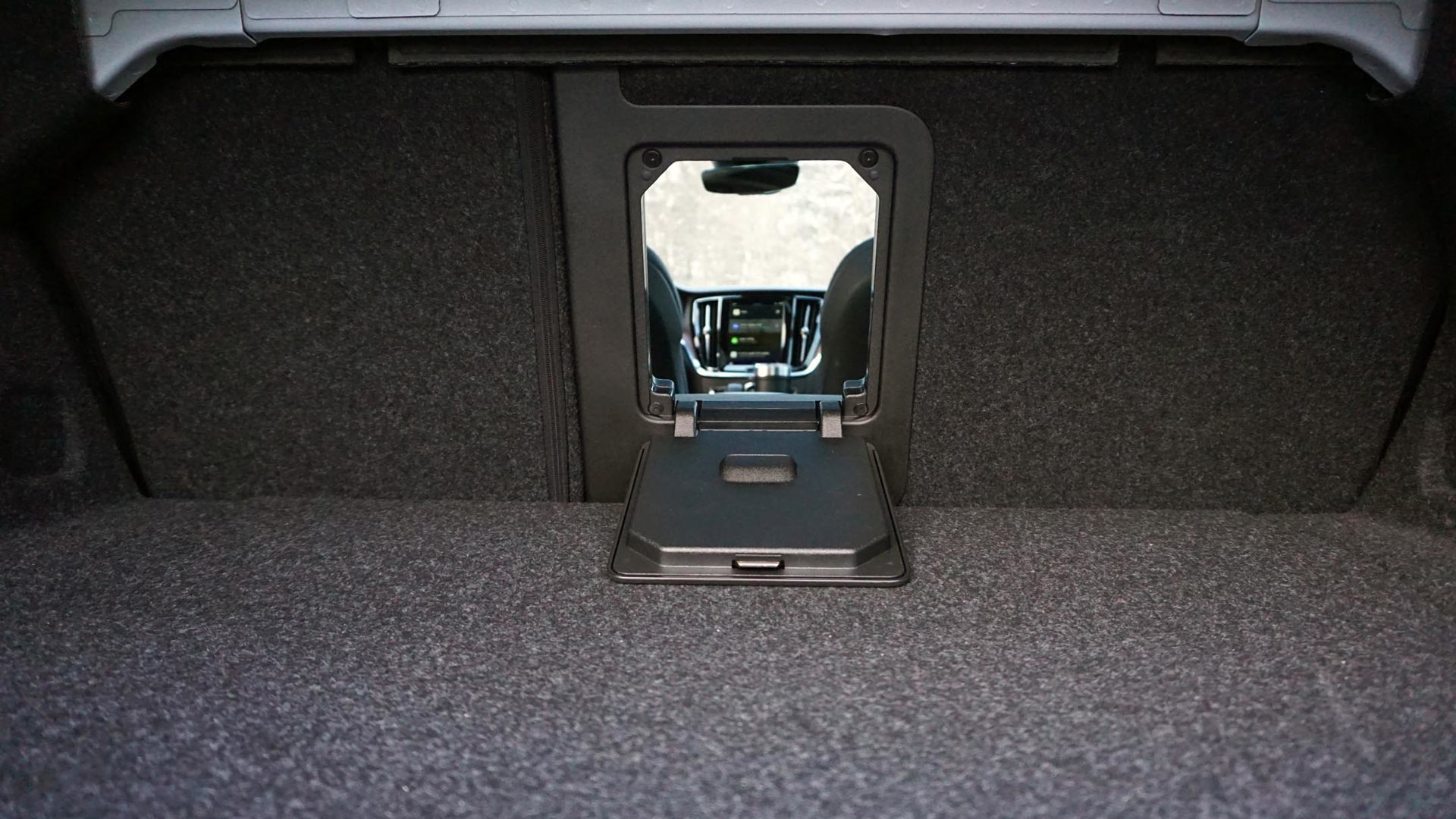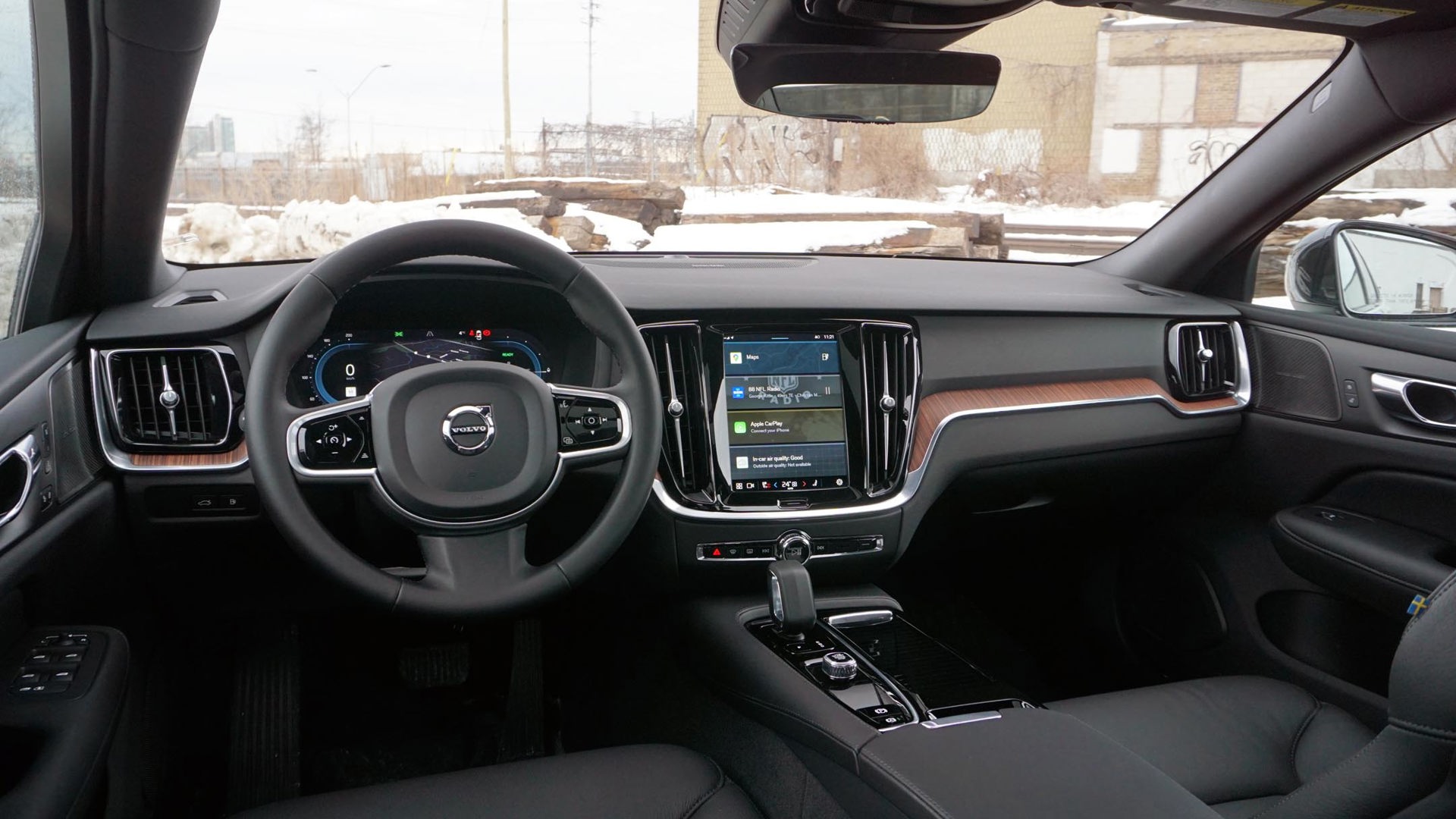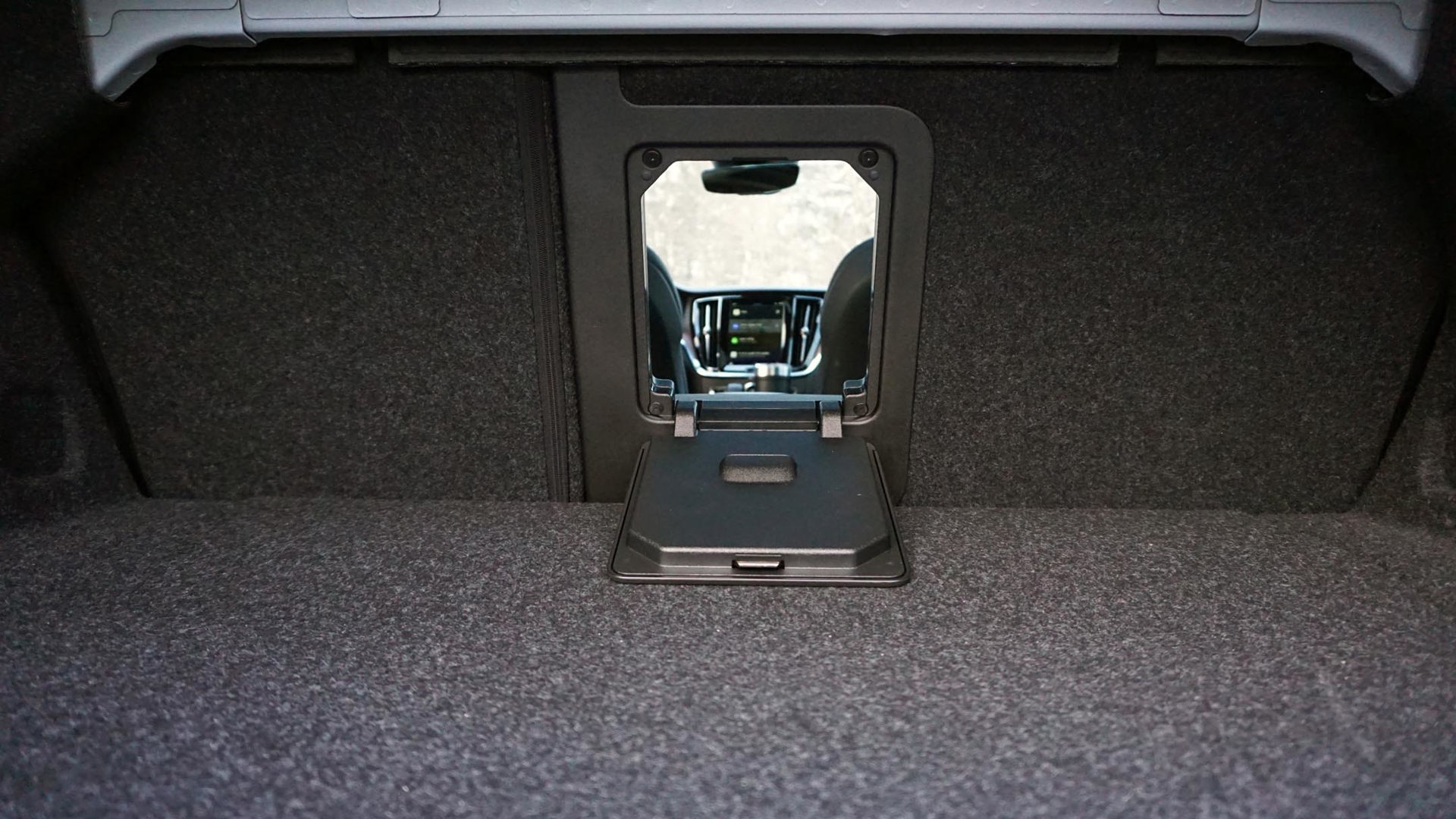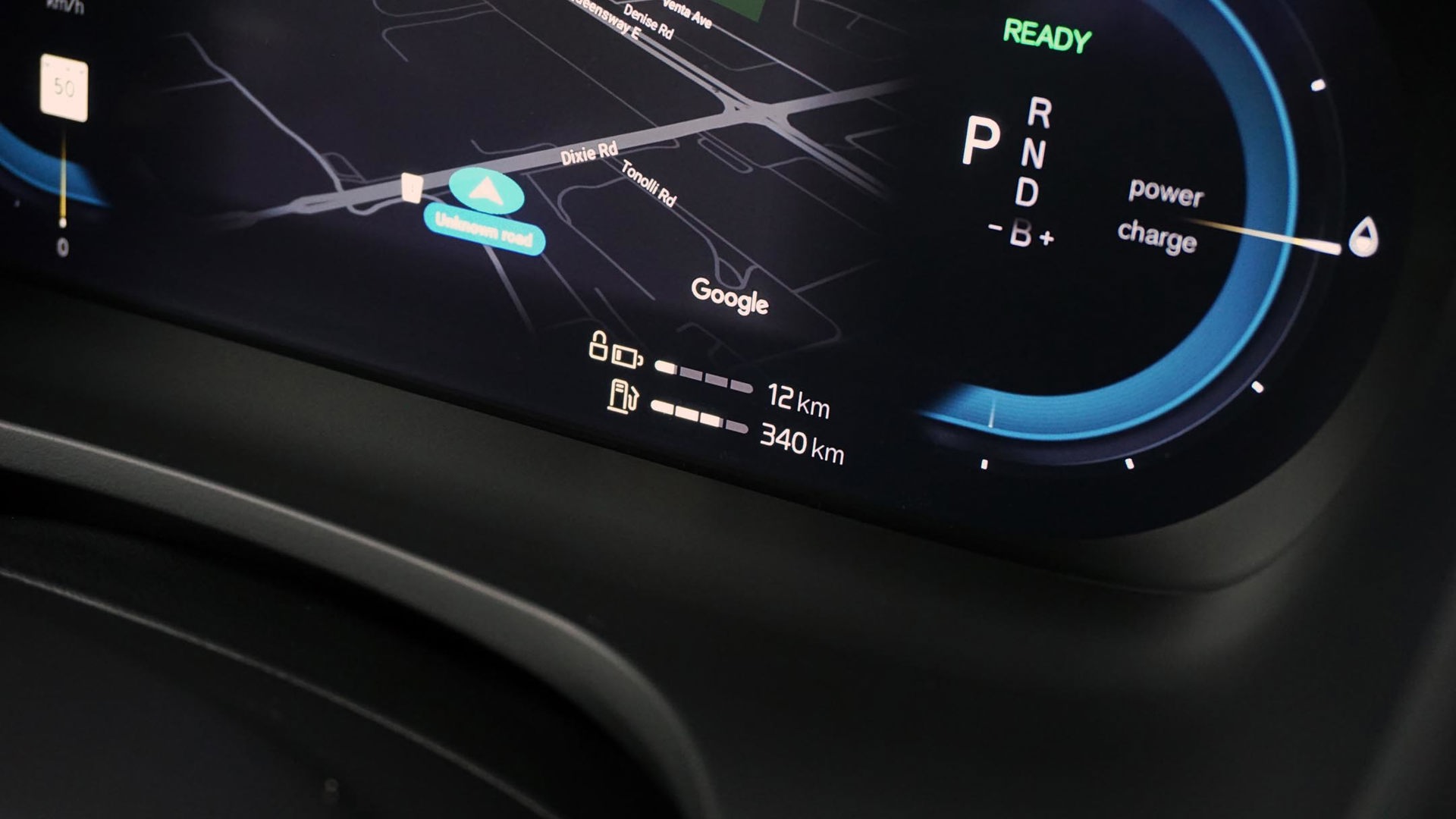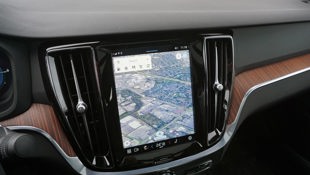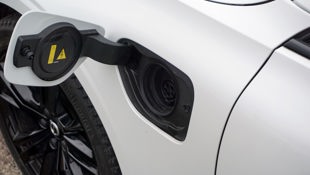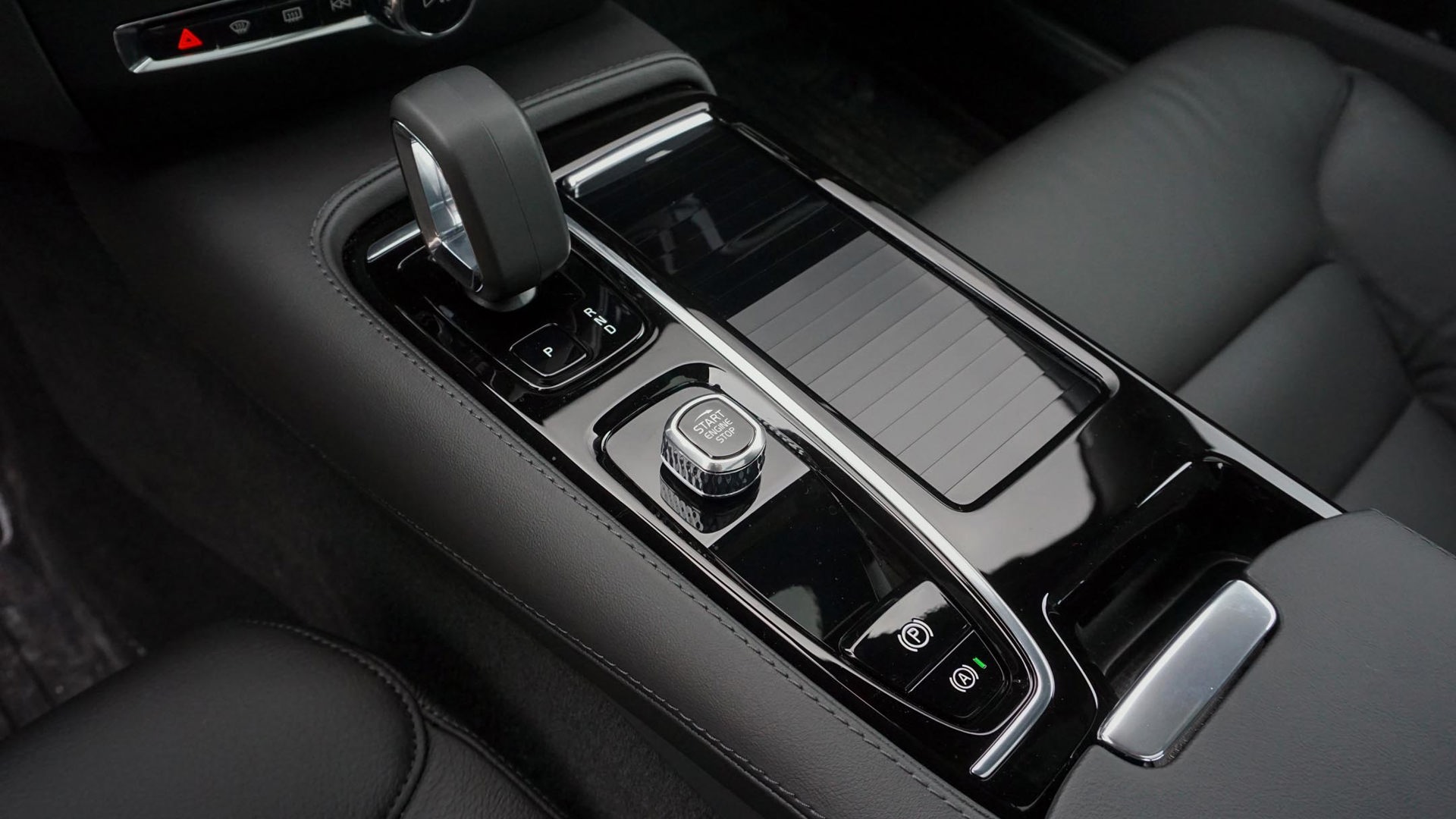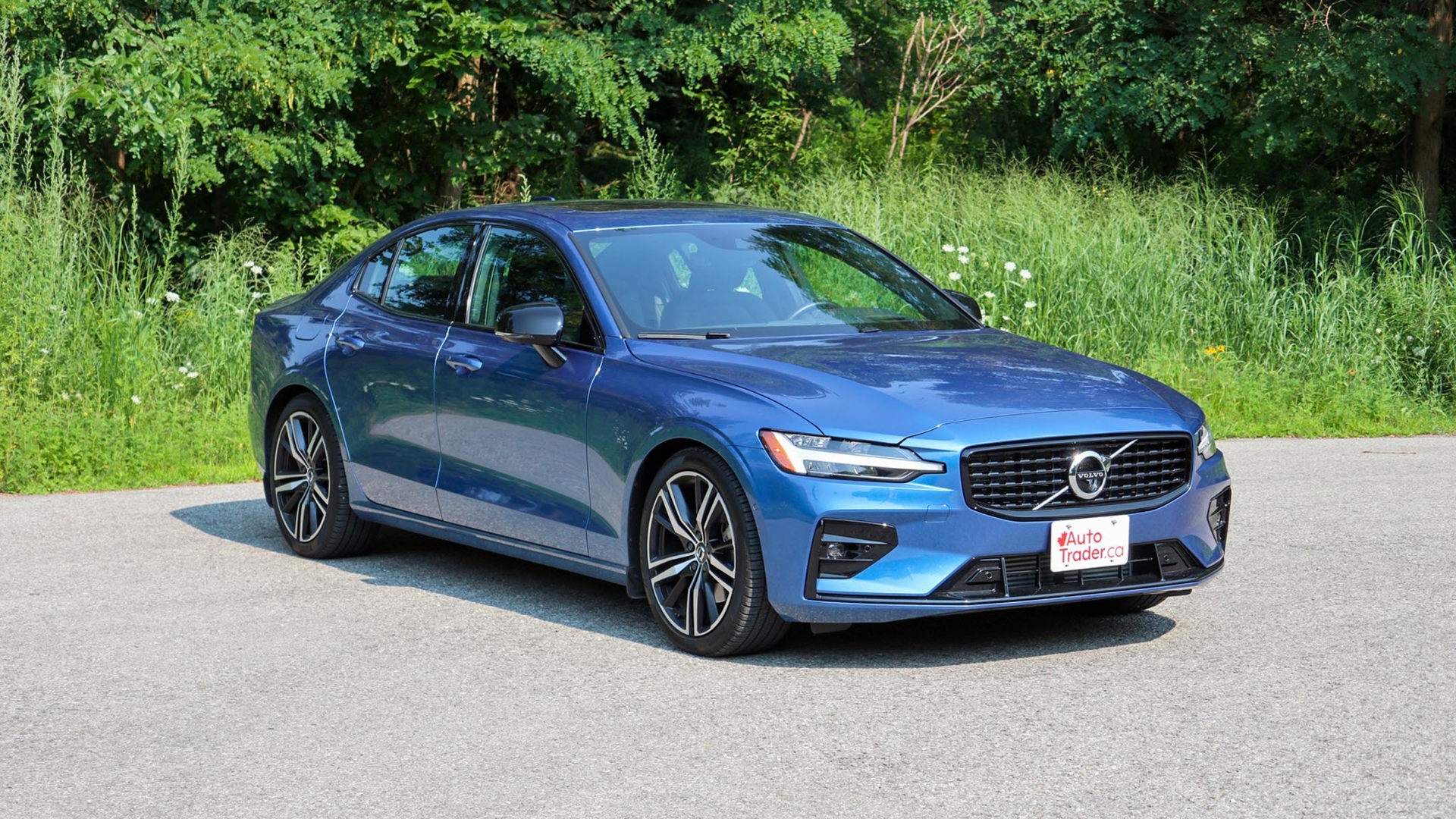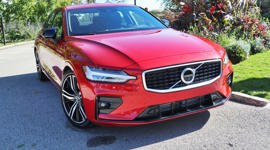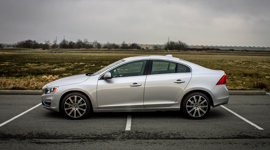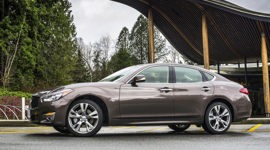 AutoTrader SCORE
AutoTrader SCORE
-
STYLING9/10
-
Safety9/10
-
PRACTICALITY9/10
-
USER-FRIENDLINESS9/10
-
FEATURES8/10
-
POWER10/10
-
COMFORT9/10
-
DRIVING FEEL10/10
-
FUEL ECONOMY8/10
-
VALUE8/10
Don’t mistake the 2023 Volvo S60 Recharge for anything other than what it is: a remarkable little sedan with a plug-in hybrid (PHEV) powertrain and plenty of upscale swagger.
Finished here in entry-level trim with a few options and extras – some of which are entirely unnecessary – it’s also something of a bargain. Now consider its efficiency, approachability, and peppy performance, and this Volvo has some serious appeal in spite of a few silly quirks.
Power: 10/10
The engineers at Volvo have put together something special here, with a powertrain that blends efficiency and performance to perfection. It starts with a turbocharged four-cylinder that’s been fitted with an electric supercharger, with 312 hp and 295 lb-ft of torque as a result. This being a PHEV, it works alongside an electric motor for a maximum combined output of 455 hp and 523 lb-ft of torque.
With that electric supercharger generating instantaneous boost to make up for any turbo lag that would otherwise exist, plus the electric motor doing the same, the S60 Recharge is capable of sports car quickness at a moment’s notice. For a bit of context, the 4.5 seconds Volvo claims it takes this all-wheel-drive sedan to hit 100 km/h from a standing start is the same as it takes the Porsche Cayman GTS to do the same sprint.
Driving Feel: 10/10
Paired with that responsive powertrain is a drive experience that’s simply spectacular. This isn’t a sport sedan – at least not intentionally – and yet it has what it needs to keep up with the likes of the BMW M340i or Audi S4 both in a straight line and on a winding road. Yes, that’s a bold claim, but then this is a car that’s capable of big surprises.
Even without the top trim’s fancy Öhlins dampers, the ride is lively and engaging. It remains flat and composed while cornering at speed, with speed-responsive steering that offers good weight and resistance and pairs well with the stiff and sporty ride. (Steering firmness can be adjusted.)
Comfort: 9/10
While the suspension is tightly sprung and features short rebound strokes, the ride is surprisingly comfortable if not especially supple. This tester’s winter tires generated some noticeable road noise, particularly on the highway, but it was never enough that a little extra volume from the upgraded stereo couldn’t drown it out (or at least make it more manageable).
With seats that blend style, support, and comfort, a more than three-hour evaluation drive to kick off this test week went by without any noticeable fatigue. All manner of adjustability up front makes the driver and passenger seats perfectly suitable places to spend time, as does the three-stage heat that reaches volcanic temperatures in a hurry.
Fuel Economy: 8/10
For all the fun and head-turning quickness this Volvo is capable of, it remains impressively efficient with or without its 18.8-kWh battery pack charged for emissions-free motoring. (That capacity is an increase from the 11.6-kWh pack previously used in the S60 Recharge.) It’s able to cover a claimed 64 km on nothing but electrons compared to 35 km before, which can be saved for later use or parsed out over time in hybrid mode. Testing saw the battery top out at 62 km – not bad for wintertime conditions.
Even when the battery’s drained, as it was to start this test, the S60 Recharge is capable of relatively conservative fuel consumption, with an official combined rating of 7.6 L/100 km – a number nearly matched during a roughly 200-km drive that burned premium-grade gas at a rate of 7.7 L/100 km. Meanwhile, the full week of testing finished at 8.0 L/100 km across a total of nearly 380 km despite deeply cold temperatures and plenty of snow.
User-Friendliness: 9/10
With vehicles from all corners of the market adopting expansive arrays of touch sensors and screens, there’s a refreshing simplicity to the S60’s cabin. Of course, infotainment is still managed through a touch display – in this case, a nine-inch vertically oriented unit; but it’s a streamlined space, with no drive mode dials or special switches to worry about.
On the flip-side, almost all drive-related features and functions are stashed within the infotainment system and require more attention than it should to, say, switch into hybrid mode and choose to save the battery’s charge for later use thanks to tiny text displays. Otherwise, the Google-based interface itself has been on the receiving end of mixed reviews since its release, but worked without issue during testing.
Practicality: 9/10
Beyond the space being simplified and free of cluttered controls, it’s easy to climb in and out of both the front and back seats, while the driver’s seat can be adjusted to provide excellent outward views. Even with the panoramic sunroof that’s standard across the S60 Recharge lineup, there’s ample headroom, while the rear seats are more spacious than they are in most sedans this size. At 391 L, the trunk is reasonably sized, too, although shoppers in need of more cargo room may prefer the forthcoming V60 Recharge wagon that boasts the same battery pack.
If there’s one area that’s lacking it’s small-item storage. The location of the battery pack in the car’s central tunnel that separates the driver and passenger footwells undoubtedly aids the balance and driving feel, but it comes at an odd expense: a tiny and almost useless console bin. A standard iPhone fits inside only when it isn’t plugged in, thus negating the new Apple CarPlay connectivity, while there’s barely enough space for a pair of sunglasses.
Features: 8/10
While this sedan is available in the choice of three trims that add more equipment as the asking price increases, the entry-level S60 Recharge Plus tested here is an impressive starting point. Leather upholstery, heated front seats, Google built-in including navigation (that can also be called up in the digital instrument display), and dual-zone automatic climate control are just some of the features fitted as standard.
Safety: 9.5/10
More importantly, a full advanced safety and driver-assist suite is standard, too. Systems like adaptive cruise control that works in stop-and-go traffic, lane keeping and centring assistance, blind-spot monitoring with rear cross-traffic alert, forward collision warning, and front and rear automatic emergency braking are included regardless of trim, as is a surround-view camera system.
The systems worked as intended during testing, with the adaptive cruise control in particular standing out for its smoothness. Unlike more advanced systems like Super Cruise from General Motors (GM) that allows for hands-free functionality on certain stretches of divided highway, the driver must remain firmly in control here. Even so, automated inputs feel natural and as if they’re working with, as opposed to against, the driver.
Styling: 9/10
The simplistic styling here is classic Volvo, with unquestionable elegance and timelessness. There’s no garishness to be found, which is entirely by design both literally and figuratively. Opting for this tester’s Black Edition package ($2,100) limits the paint choices to just black or white, while exterior details like the badges and wheels are finished in its namesake shade. The Star Wars stormtrooper look won’t be for everyone, and that’s OK – skipping it opens up a palette of greys and silvers to go with striking red or blue options.
The interior is even more understated, with simple shapes and genuine leather and wood finishes, and just a bit of glossy plastic that’s prone to dust, fingerprints, and smudges. Opting for either the Ultimate or Polestar Engineered trims means adding a little flash – and more fingerprints – thanks to a crystal gear selector.
Value: 8/10
Stick with this entry-level trim and its starting price of $59,950 – plus a freight fee of $2,620 – is just as appealing as its upscale charm. That’s cheaper than a comparable BMW 330e with all-wheel drive, plus the S60 Recharge has 34 km more all-electric range than that Bimmer.
Even opting for some of the extras here like the package that includes a heated steering wheel and rear seats ($,1000) or the upgraded stereo ($1,200) keeps the sticker price reasonable while giving this sedan even more premium appeal. Opting for the Ultimate stretches the value proposition a little further, with a starting price of $67,750 before fees and taxes, while the performance-oriented Polestar Engineered rings in at $75,300.
The Verdict
While it may compete in a segment of two when it comes to premium PHEV sedans this size, the 2023 Volvo S60 Recharge is a compelling car regardless of its powertrain. In a hard-fought class that includes the likes of the Audi A4, BMW 3 Series, Mercedes-Benz C-Class, and Genesis G70, this Volvo might well be the most underrated around.
Changes to this gas-electric version are minimal this year, with the biggest being the larger battery and expanded emissions-free range, which only serves to broaden its appeal. The S60 Recharge is sensible, stylish, efficient, and even fun. Now add in the affordability of the base version, and it’s easily one of the best premium entries on the market, period.
| Engine Displacement | 2.0L |
|---|---|
| Engine Cylinders | Turbo I4 PHEV |
| Peak Horsepower | 455 hp combined |
| Peak Torque | 523 lb-ft combined |
| Fuel Economy | 8.0 / 7.2 / 7.6 L/100 km cty/hwy/cmb, 3.0 Le/100 km; 64 km est. range |
| Cargo Space | 391 L |
| Model Tested | 2023 Volvo S60 Recharge Plus |
| Base Price | $59,950 |
| A/C Tax | $100 |
| Destination Fee | $2,620 |
| Price as Tested | $67,450 |
|
Optional Equipment
$4,780 – Black Edition package, $2,100; Harman Kardon stereo, $1,200; Climate package, $1,000; Protection package, $480
|
|

